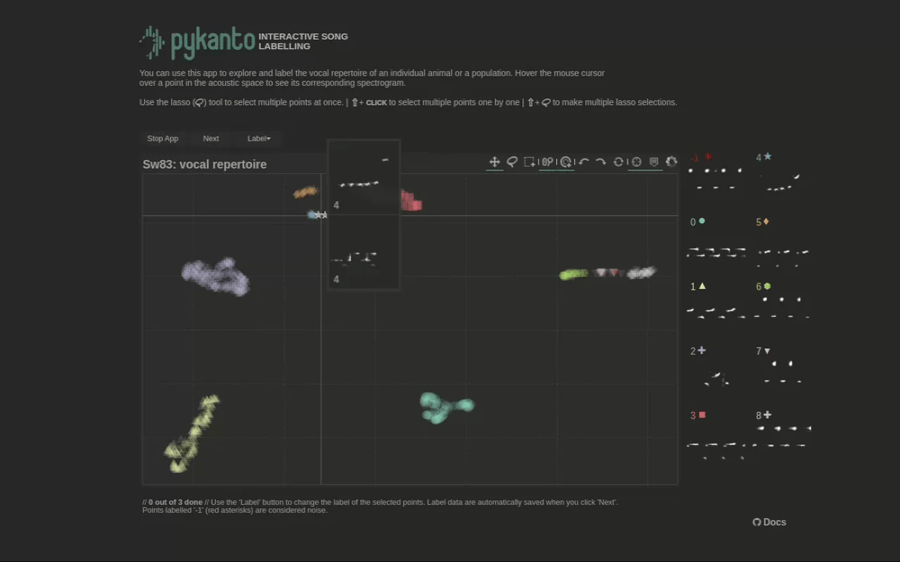See installing pykanto for a complete installation guide.
To install pykanto using pip, simply run:
pip install pykanto
See getting started for a complete use guide.
There are three small vocalisation datasets packaged with pykanto, used
for unit tests and demonstration purposes. These will be downloaded automatically
when you install the library.
| Dataset | Description | Source |
|---|---|---|
| Great tit songs | Dawn songs from male birds in a population in Oxford, UK | Nilo M. Recalde |
| European storm-petrel purr songs | Males singing from burrows in the Shetland and Faroe islands | XC46092 © Dougie Preston XC663885 © Simon S. Christiansen // CC licence |
| Bengalese finch songs | Recordings from two isolated Bengalese finches | Originally published in Tachibana, Koumura & Okanoya (2015) Data: DOI |
The project is licensed under the MIT license.
If you use pykanto in your own work, please cite the associated article and/or
the repository:
-
Some of the methods that are part of
pykantoare directly inspired by or adapted from Sainburg, Thielk and Gentner (2020). I have indicated where this is the case in the relevant method's docstring. -
The
dereverberatefunction is based on code by Robert Lachlan that is part of Luscinia, a powerful software for bioacoustic archiving, measurement and analysis. -
I have learnt a lot about packaging and python by perusing the structure of projects by NickleDave. I became aware of VocalPy, a project that aims to "develop an ecosystem of interoperable packages" for "computational vocal communication and learning research" when I had already written most of
pykanto, but eventually I'd like to make it compatible with it: standardisation is direly needed in the field and I don't want to contribute to the chaos.
© Nilo M. Recalde, 2021-present






